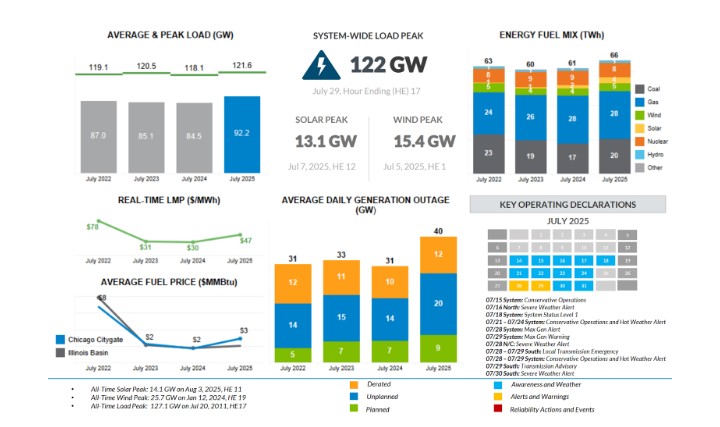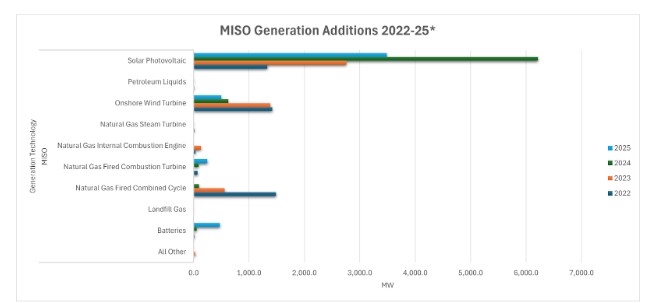The Midcontinent Independent System Operator (MISO) has long been known for its wind power. Thanks to forward-thinking transmission planning, MISO integrated thousands of megawatts of wind that now complement coal, gas, nuclear, and hydro. But the story is changing—solar is rapidly becoming MISO’s next big success story.
Back in July 2022, solar supplied about 1 TWh of electricity, or just 1% of MISO’s monthly energy mix. Fast forward to July 2025, and solar delivered 6% of MISO’s total generation. That’s a six-fold increase in only three years.

Source: MISO July 2025 Market and Operation Report
This growth is even more striking given the headwinds. Average July demand was 5GW higher than five years ago, while planned and unplanned outages jumped by 7GW. Yet, solar output helped keep the grid stable during the hottest days of the summer.
How We Got Here
In 2022, MISO added solar, natural gas, and wind in roughly equal measure. Every year since, solar additions have far outpaced other resources.

Data Source: EIA Form 860M July
And there’s much more on the way. By 2029, nearly 13,800 MW of new solar capacity is projected to come online in MISO. Roughly 28% of that growth will be in the South—Arkansas, Louisiana, Mississippi, and Southeast Texas—a region that historically contributed only about 1% renewable energy to the MISO grid.

Data Source: EIA Form 860M July
Meeting the Surge in Data Center Demand
Not every solar project in EIA’s database will get built; state regulatory approvals and federal policy shifts like the repeal of clean energy tax credits in the “One Big Beautiful Bill Act” could slow progress. Still, the fundamentals are clear: MISO’s rising demand - fueled in part by data center growth - needs fast, scalable solutions that renewables like solar are able to deliver.
Natural gas turbines are increasingly scarce and face long lead times. Solar, wind, and storage, by contrast, can come online within two to three years. Today, MISO’s queue holds more than 118,000 MW of solar projects awaiting interconnection. Together with storage and wind, these resources are positioned to meet demand growth more reliably and affordably.
And best of all—while markets, policies, and technologies shift—the sun will keep rising every day, powering MISO’s clean energy future.


